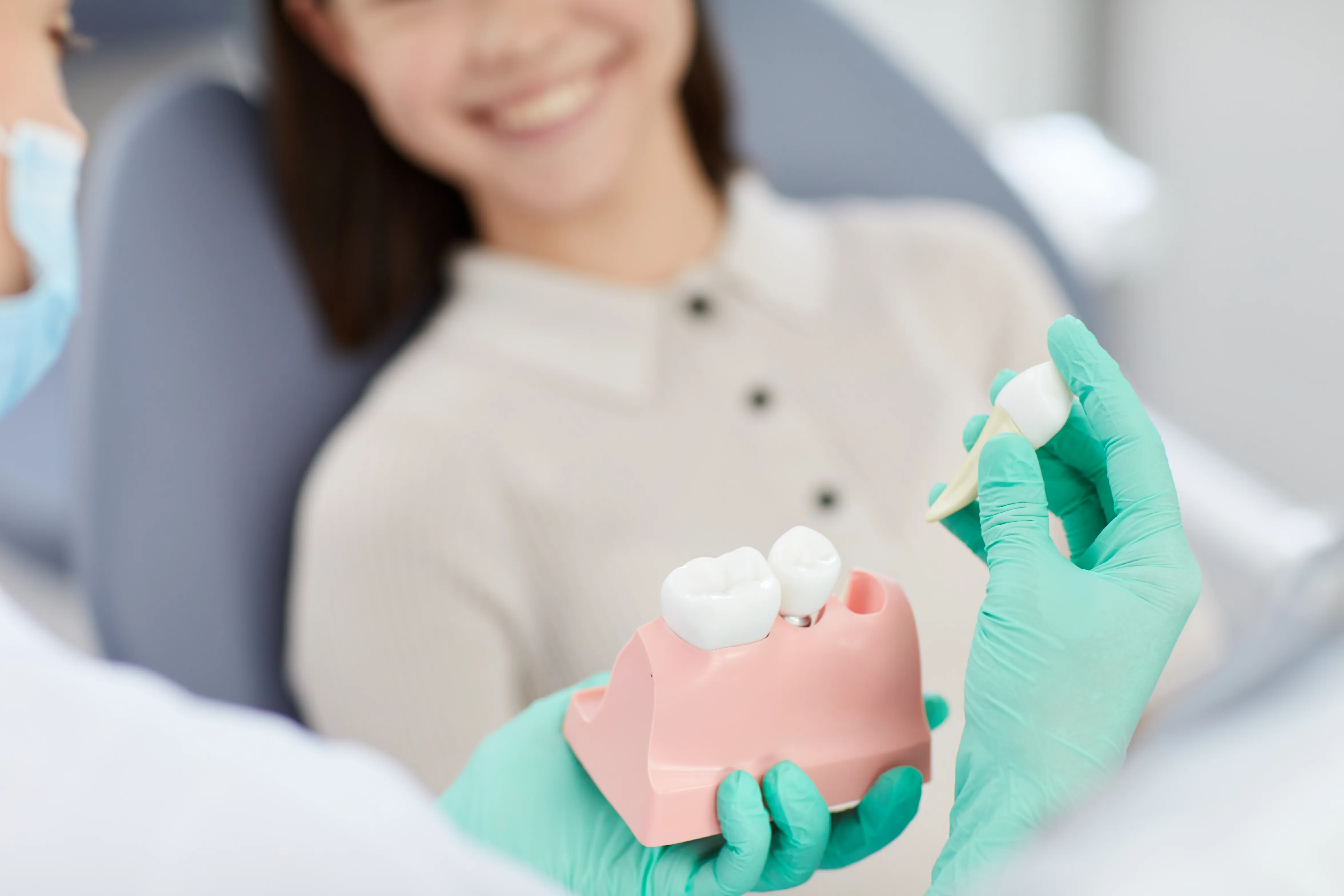When broken or decayed teeth cannot be restored to health through repair, their removal may become necessary. A tooth extraction typically involves local anesthetic being administered prior to extraction to numb the area in preparation.
People will then be instructed to bite down on a piece of gauze covering their wound, in order to control bleeding and aid clotting formation. Any anesthetic effects should wear off within several hours.
Preparation
At your consultation for tooth extraction, your dentist will conduct a review of both your medical and dental history before explaining the procedure and answering any of your questions about it. Be truthful with any health issues or medications being taken currently as this could alter the timeline for recovery.
At your initial consultation, your dentist will take X-rays of the affected area. Depending on how complex your extraction is, they may numb it using local anesthetic. They may also ask you to bite down on some gauze to slow bleeding and promote clotting at the extraction site.
People should avoid eating for 12 hours prior to surgery, with the exception of water and medication. This will help them feel less queasy during and after their operation. Patients should also refrain from drinking alcohol or smoking before their procedure as these could interfere with blood clotting at the surgical site.
Most simple extractions do not require anesthesia or sedation; dentists can usually numb the affected area with local anesthetic. However, for more complicated extractions involving drilling or sawing to separate and extract multiple pieces from a tooth at once, an anesthesiologist will usually administer nitrous oxide, also known as laughing gas, along with mild oral sedatives to make patients comfortable during and following their procedure. These effects should wear off within minutes to allow someone to drive themselves home afterward.
Those needing sedation or anesthesia should bring someone with them who will drive them home after the procedure has completed. Do not attempt to drive yourself as you will likely become unsteady due to any anesthetic effects on the feet.
Bring along something to distract yourself during your wait – be it books or electronic devices such as phones. As it is important that the anesthesia wears off before leaving the dentist’s office, your dental assistant can assist in your departure preparations.
Anesthesia
Dentists or oral surgeons will administer local anesthetic to numb the site of tooth extraction so that patients do not feel any discomfort during the surgery. Sometimes additional measures like sedation may also be used; usually for more complex procedures like the extraction of wisdom teeth impacted into adjacent jawbones; unconscious patients will remain under dental team monitoring of breathing, heart rate and blood pressure throughout treatment.
Nitrous oxide, more commonly known as laughing gas, is another safe and effective form of anesthesia for patients who are nervous about undergoing medical procedures. Administered through a nasal mask placed over your nose, laughing gas works by mixing oxygen with nitrous oxide to produce a relaxing and euphoric experience that many find comforting during appointments. It has proven a valuable solution to many patients suffering anxiety related discomfort during appointments.
Once anesthesia wears off, pain will slowly start to set in. Patients should rest for 24 hours following tooth extraction to minimize complications like bleeding and swelling. If experiencing discomfort they should take over-the-counter pain relief medication like acetaminophen or ibuprofen to alleviate their suffering.
Once the socket has been enlarged, a surgeon will begin the extraction process by drilling away small gaps of bone to create an application point for instruments. When done, rocking back and forth to loosen and then pull from jaw bone with forceps. Following extraction, gum is typically closed using dissolvable stitches in corner of mouth where tooth was extracted.
If a person experiences severe discomfort, fever, chills or persistent odor or taste issues around the site of their tooth extraction they should call their dentist or oral surgeon immediately as this could be signs of infection and lead to dry socket.
To expedite healing, it’s essential to consume soft foods and avoid exerting pressure on the extraction site. Rinsing gently with saline solution or salt water can also help remove bacteria from wounds while decreasing inflammation.
Surgery
After administering local anesthetic to numb the area, a surgeon will use an elevator tool to loosen and extract pieces of the tooth from its socket in both gum tissue and bone. After completion of surgery, sutures will be used to close up any open areas; additionally, antibiotics may be prescribed postoperatively to avoid infections.
After undergoing dental or oral surgery, it is vital for an individual to follow all post-procedure instructions given by their dentist or oral surgeon. This may include eating soft foods to avoid food being lodged into an empty tooth socket, rinsing with salt water and keeping the site clean, as well as resting to allow their body to recuperate properly.
Before having their tooth extracted, patients must inform their doctor of any health or medical conditions which might make the procedure more complicated. For instance, people suffering from high blood pressure, heart issues or bleeding disorders should inform their dentist and inquire as to any risks and complications involved in extraction procedures.
After having their tooth extracted, individuals should aim to consume soft foods such as soup or pudding during the first few days afterward. They should avoid hard or chewy foods which require much bite force as this may interfere with healing. A person should also rinse their mouth several times per day with warm salt water rinses in order to maintain an uncontaminated healing socket.
When recovering, it is vitally important that one takes painkillers as instructed by their dentist or oral surgeon and rest as much as possible, sleeping propped up on extra pillows to reduce bleeding and encourage clot formation in their tooth socket.
Apply an ice pack to reduce swelling after having your tooth extracted, for the next ten minutes only and remove afterwards. Spitting or rinsing vigorously could dislodge clots from the tooth sockets and lead to bleeding or infection in some instances.
Recovery
Based on your type of tooth extraction and medical history, you may experience pain, discomfort, and swelling post-surgery. Your Gilbert dental provider should provide pain relievers and antibiotics to manage this pain; take these as directed to minimize discomfort and avoid infection. If relief from over-the-counter painkillers does not provide relief after several hours or days have passed without relief being felt please call him immediately as it could be an indicator of an infection.
After your extraction procedure is over, your dentist will apply gauze over the extraction site and request that you bite down with firm and continuous pressure in order to reduce bleeding and promote clotting at the wound site. Clotting helps seal off wounds and protects against complications like dry socket.
Normal post-extraction bleeding or oozing should last up to 24 hours after surgery. Do not remove gauze packs or spit, as doing so could dislodge blood clots and delay healing. Instead, rinse with warm water mixed with salt several times throughout the day for best results.
Reduce pain and discomfort after tooth extraction with an ice pack placed for up to ten minutes on your cheek area, in addition to decreasing chances of infection and speeding recovery. Sleep after extraction should also help support healing processes; if pain prevents you from sleeping through the night try taking over-the-counter pain relievers like Ibuprofen.
Swollen gums, sore throat and other side effects associated with tooth extractions are often experienced; however, these should begin to lessen within a few days. To alleviate symptoms more quickly, soft foods that do not require much chewing should be eaten and anything crunchy or spicy should be avoided. A mouthwash that kills bacteria such as homemade saline solution made from salt and warm water would also be beneficial in killing oral bacteria effectively.
Once the effects of anesthesia wear off, you should consume water and non-sugary soda to stay hydrated. Be wary of beverages with hot or cold temperatures as these may irritate the surgical site and cause pain. Furthermore, alcohol beverages and sugary candies should also be avoided as these may increase tooth decay risk and increase infection risks.
Disclaimer: The content on this blog is intended for general informational purposes only. It is not a substitute for professional medical advice, diagnosis, or treatment. Always consult qualified healthcare providers for personalized advice. Information regarding plastic surgery, dental treatment, hair transplant, and other medical procedures is educational and not a guarantee of results. We do not assume liability for actions taken based on blog content. Medical knowledge evolves; verify information and consult professionals. External links do not imply endorsement. By using this blog, you agree to these terms.










